This week we’re off to the V&A, the Victoria and Albert Museum, it was named after the Queen and Consort since it was Albert’s idea to establish a cultural area in South Kensington following the success of the Great Exhibition of 1851. Museums at this time were not just cultural storehouses, they were contemporary showcases, gentlemen aspired to have museums to show their professional and personal achievements, so you get very specific sites, such as the Hunterian which demonstrated the fruits of the medical profession and the Sir John Soane showing his architectural artistry. The V&A was to be a museum of Manufactures which would highlight the best of the burgeoning Industrial Revolution.
As such, the tilt is towards design, not only in the collections but the also the buildings. What a treasure it is now, centred around the quadrangle, the design and interior decoration is worth a visit in itself. We started with a coffee at the Museum Café, the first ever museum restaurant facility, it was actually built to entice customers into the museum, a concept that holds firm to this day. It has to be the most lavish museum café in London as well, the ornate tiling has an iconography all of its own and the high ceilings and huge chandeliers add further glamour. It has a utilitarian feel as well though, simple seating and a open cafeteria vibe.
From the small and perfectly formed Monet last week to the large and lavish this week, The Great Mughals is a large exhibition, it covers three eras under the reigns of emperors Akbar, Jahangir and Shah Jahan. It’s arranged in sections that clarify this as you move from one defined phase to another through partitions representing Mughal architecture.
I’m going to profess very little knowledge of the art of the Mughal courts and that’s fine, that, after all, is the point of visiting exhibitions and learning about new things. The golden age of Mughal Art is described as being 1580-1650, it starts under Akbar who commissioned many workshops to create lavish artworks. One of the most important was the House of Books where illuminated Mughal Manuscripts were produced, several books with water colour illustrations are on display detailing well know literature and current events.
This is an illustration from the manuscript The Hamza-Nama, it shows the mythical giant Zumurrud Shah fleeing from Amir Hamza, a legendary Muslim warrior. The colours are incredibly fresh and vibrant, it’s also highly detailed, I can’t help but think of illuminated bibles. Some illustrations have been taken out and framed as individual artworks but there were also full books on display, with illustrated pages and written texts, they’re beautiful pieces.
There are bejewelled ceremonial items as well, this spoon is covered in emeralds and rubies with a gold foil, look at those intricate patterns, amazing goldsmith’s work. Similarly, there are caskets worked with mother of pearl giving multicoloured luminescent adornment, what’s interesting about these is their use in this altar frontal which has Christian narratives such as cherubs and angels. Goa was a centre of Jesuit missionary work so it’s interesting to see religious artifacts expressed through the artistic media of the Mughal Courts.
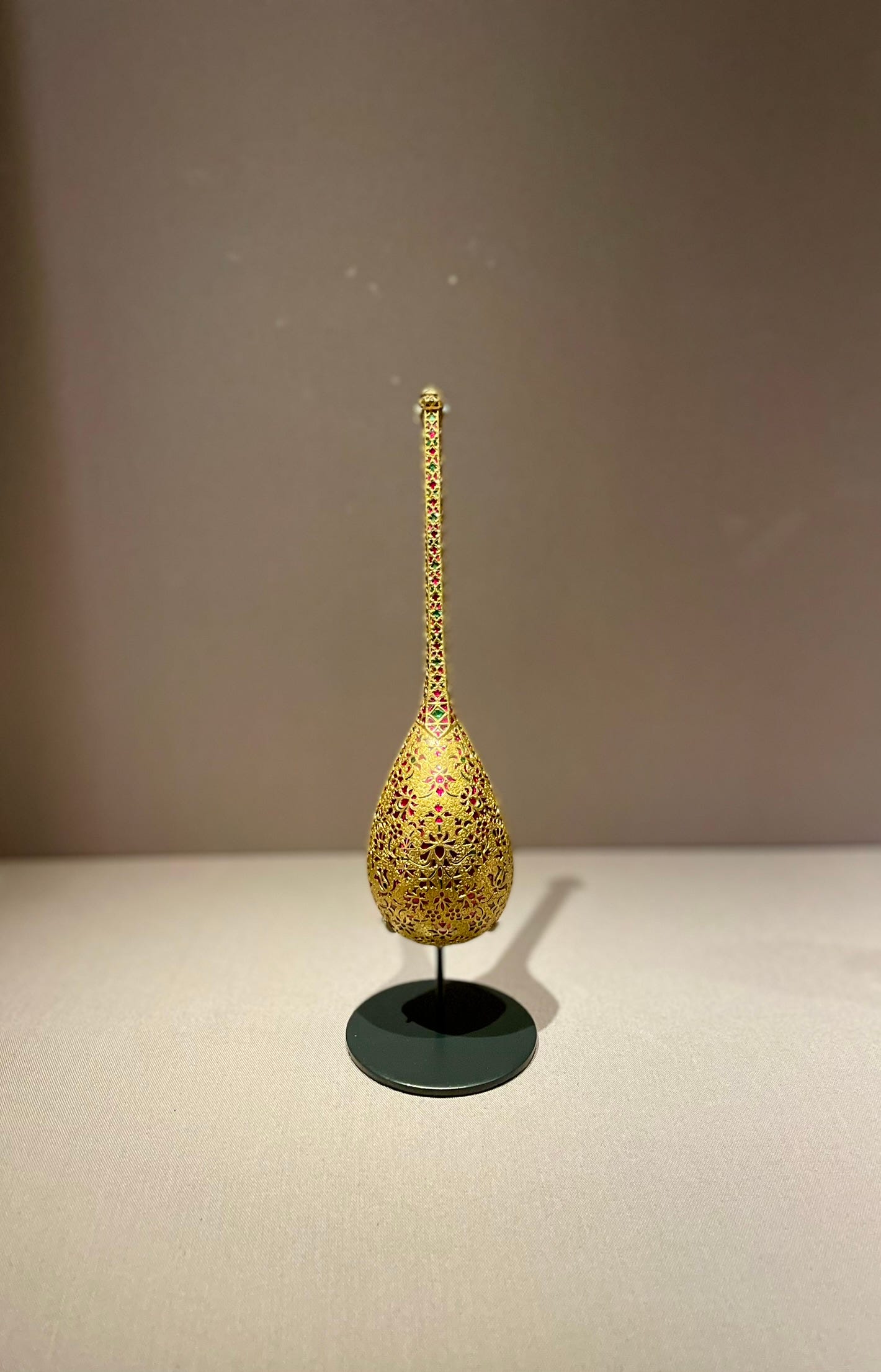
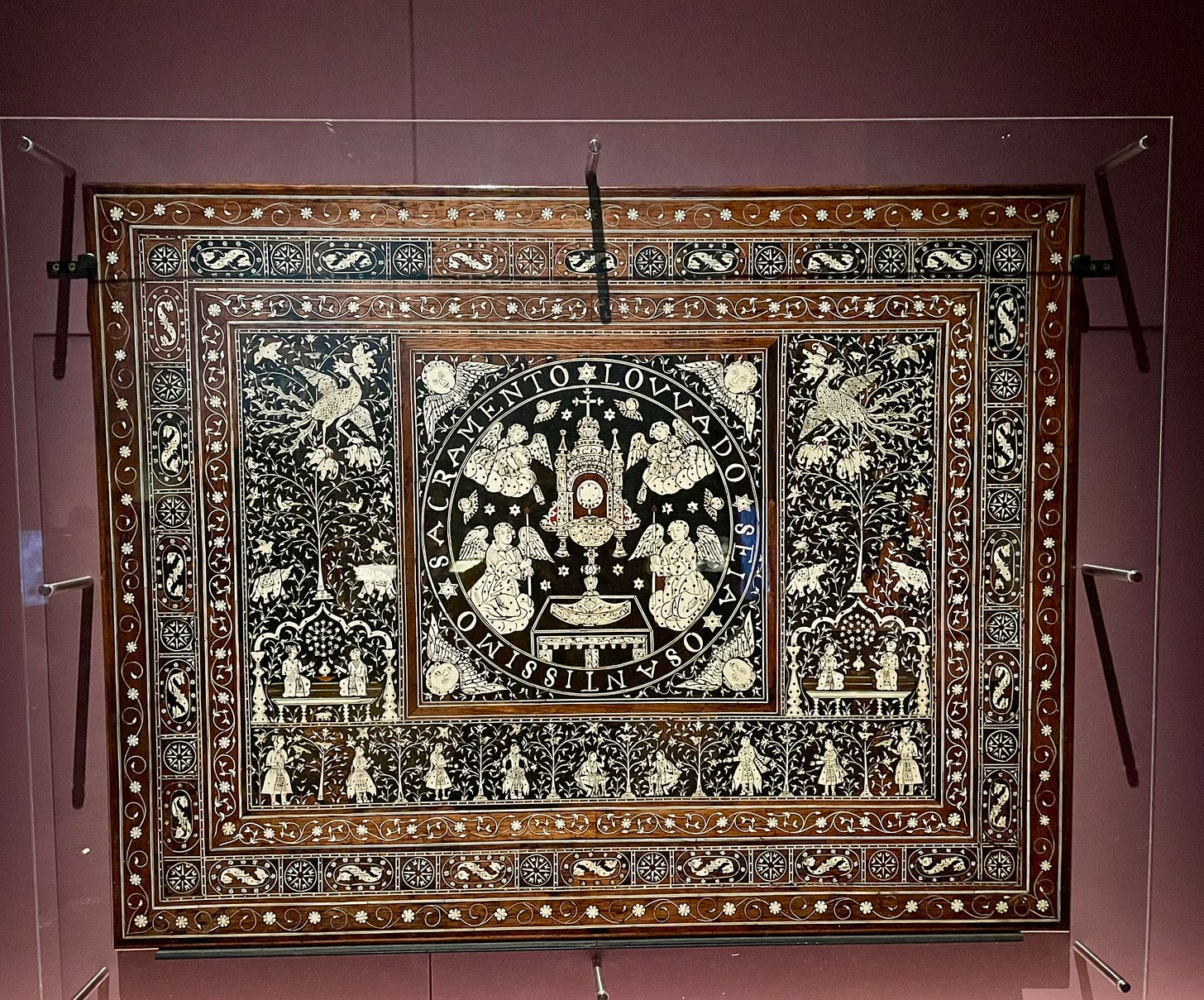
The next era is the reign of Jahangir, this section points to the journeying nature of the Mughal Court and the interest in nature and hunting, not much different to European courts then! I loved the depth of embroidered detail on this hunting coat, a safari all of its own, there are animals, birds, plants, flowers, it’s hard to see the effect on the full coat but the close up pictures give you some idea of the intricacy of the needlecraft.
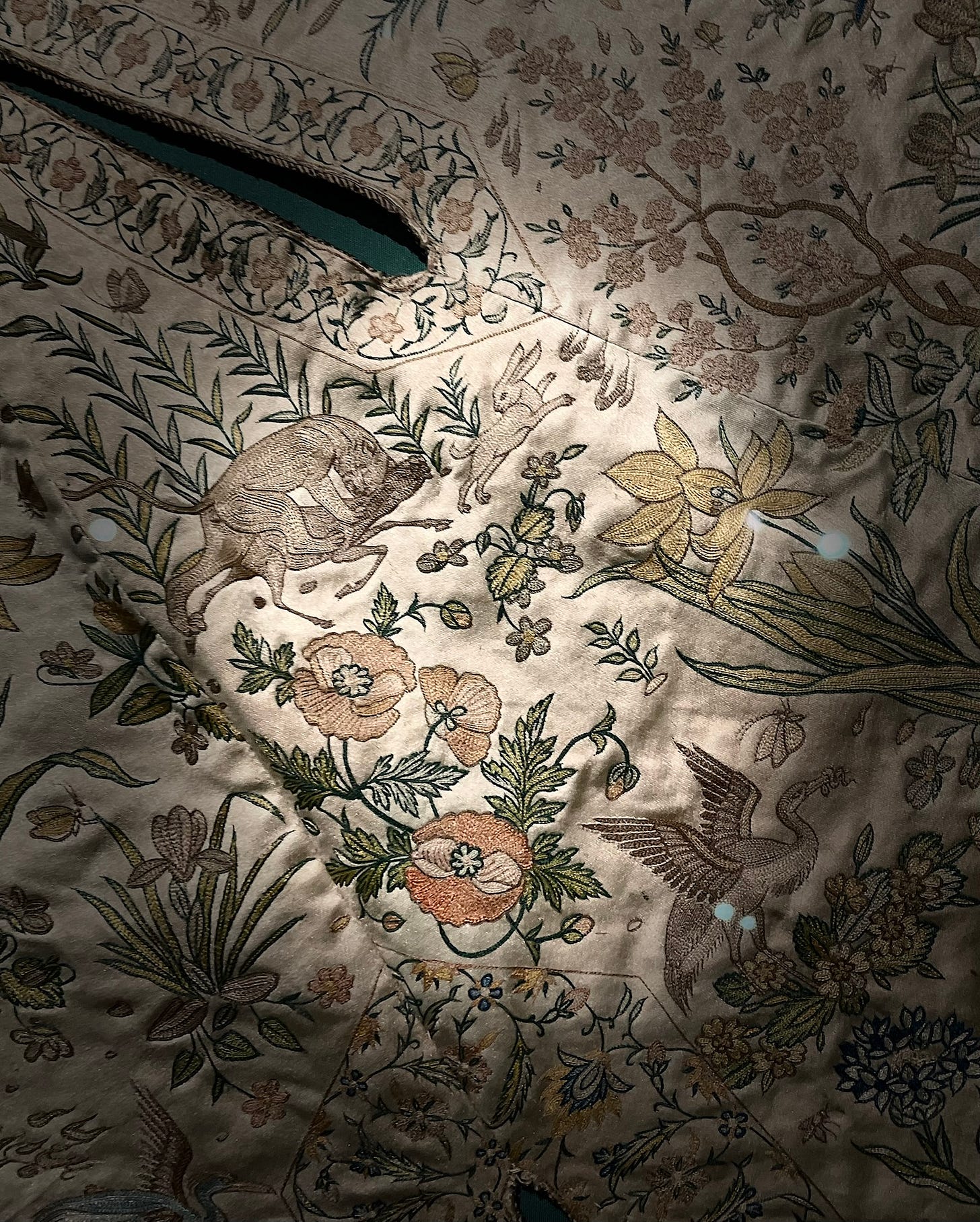
The last section is Shah Jahan, his court was lavish in the arts and he commissioned one piece of Mughal Art we do all recognise, even if it is due in the main to the British love affair with Indian food, the Taj Mahal of course. The Gallery Tart has been lucky enough to visit the Taj Mahal and it really is a breathtaking masterpiece, it was interesting to be able to situate it within the cultural contexts it was made through this exhibition. The labelling tells us that the floral decorative style of the Taj Mahal was influential across the Mughal empire and this can be seen in a variety of decorative items in this section. What also stands out for me in particular is the obvious influence on the Arts and Crafts movement, the flattened botanical styles, the mathematical repetition, the rich colours were all to emerge two centuries later in the Art of William Morris and friends!
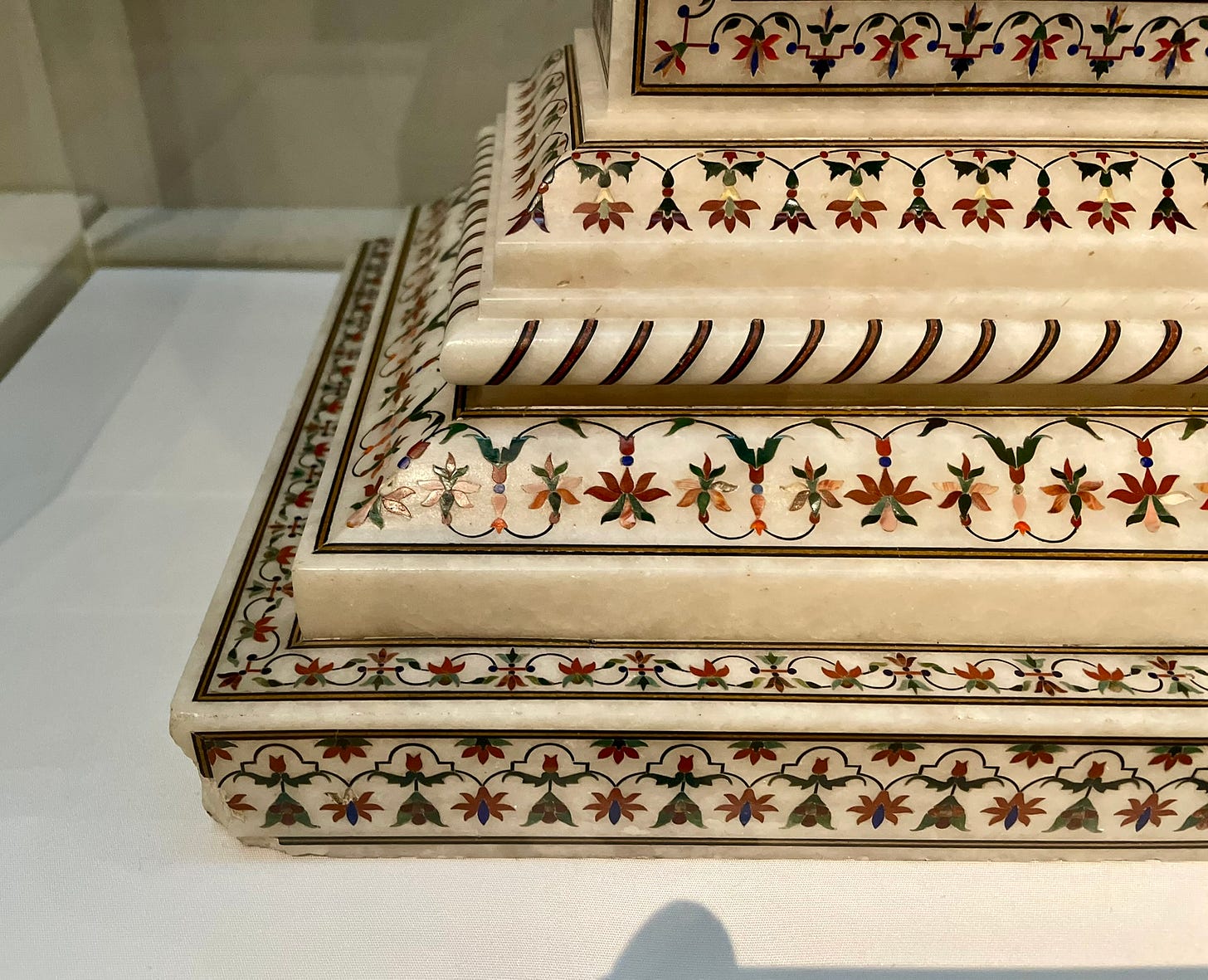
This is a large exhibition, the linear tracing of the three eras under different rulers helps to get an understanding of the development of arts within the Mughal courts. I got a sense that the Arts leap from within the pages of illustrated books and ceremonial items to embellish a wider range of items across the courts by Jahan’s rule but that may be my imagination! Exhibitions such as this one, Silk Roads and A Silk Road Oasis are starting to lift the lid on Art Histories beyond the Western Cannon, more so, they are shining a light on the interconnectivity between influences on the Arts through global trade and collaboration. Which brings me back to the Museum Café, created in the Arts and Crafts era, William Morris had a hand in the decoration, influences from the Mughal Courts can be seen, the flattened flowers, the saturation of detail, the richness of the colours are all there, in a different form but there, what do you think?
Rita Fennell
Gallery Tart!


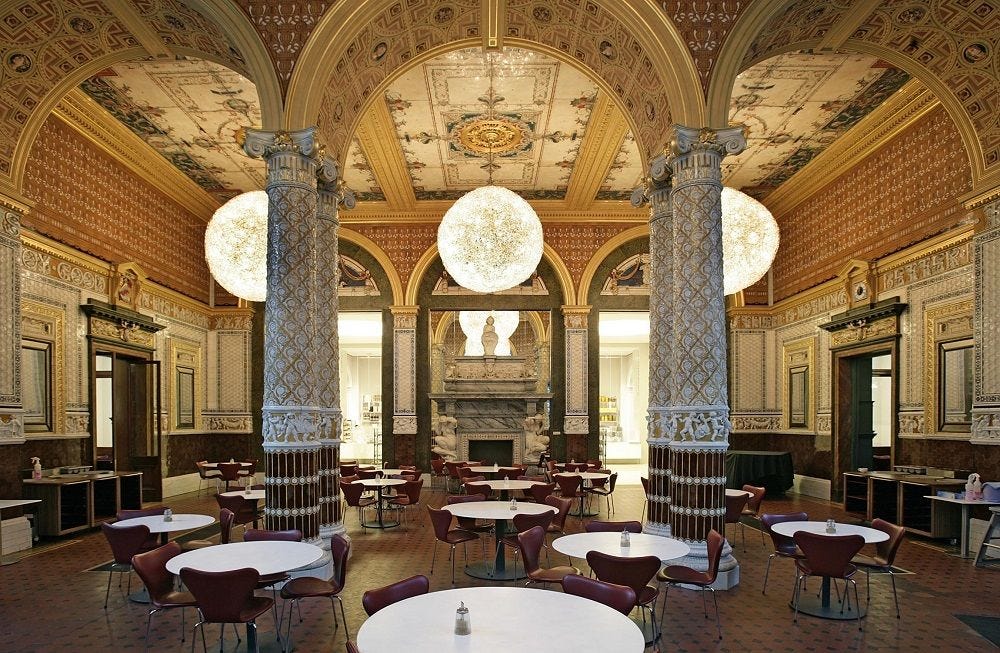
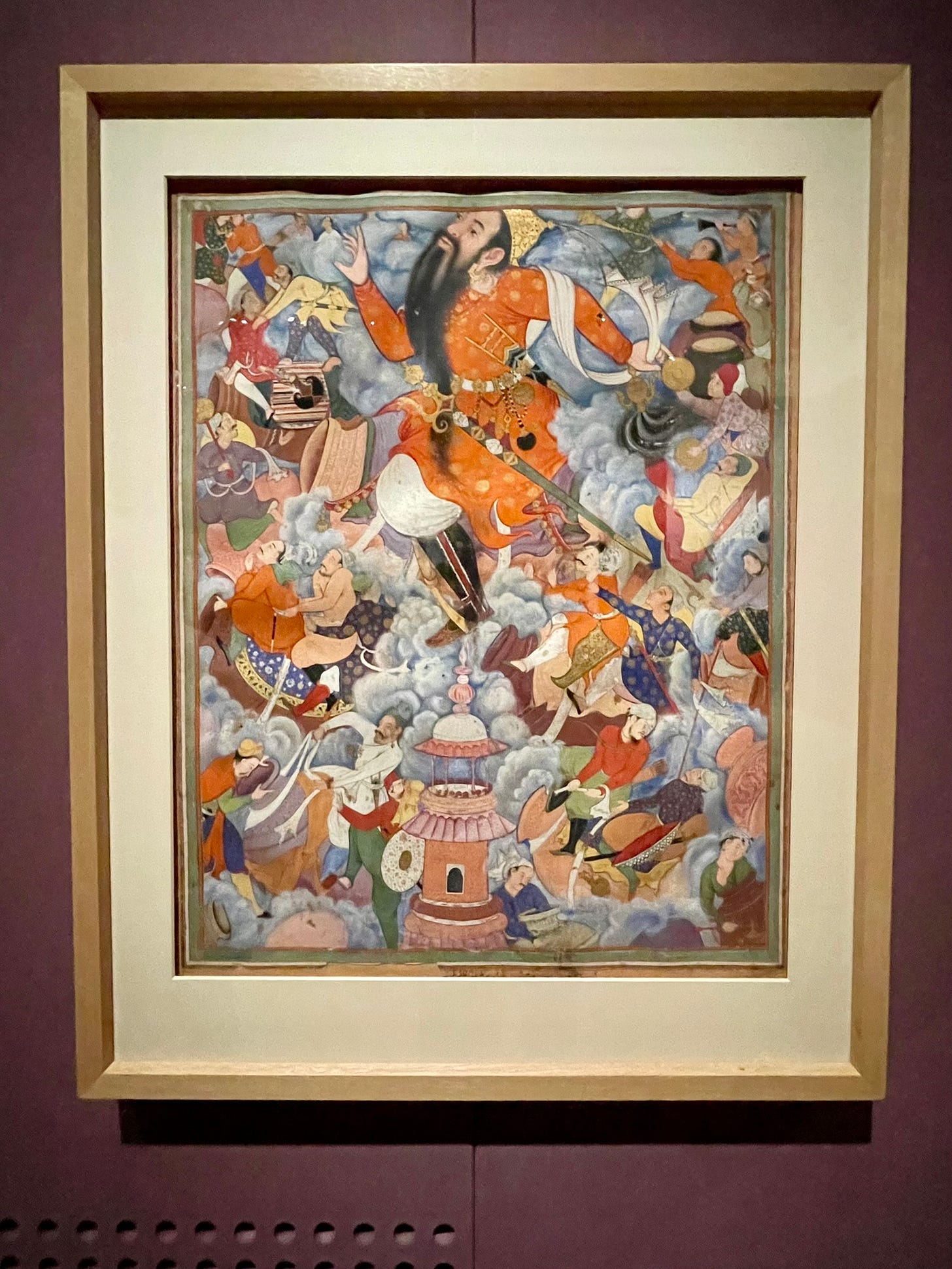
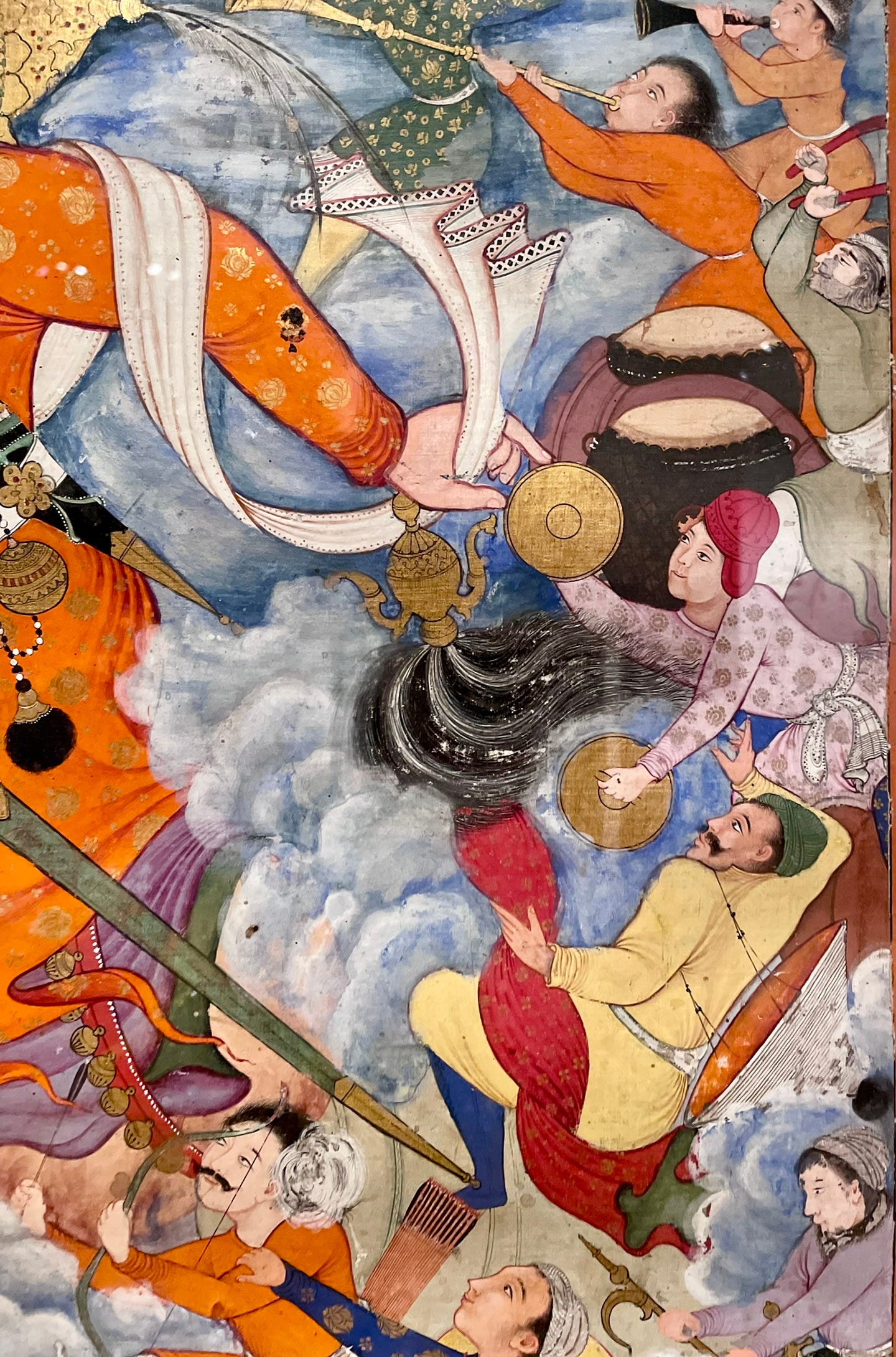
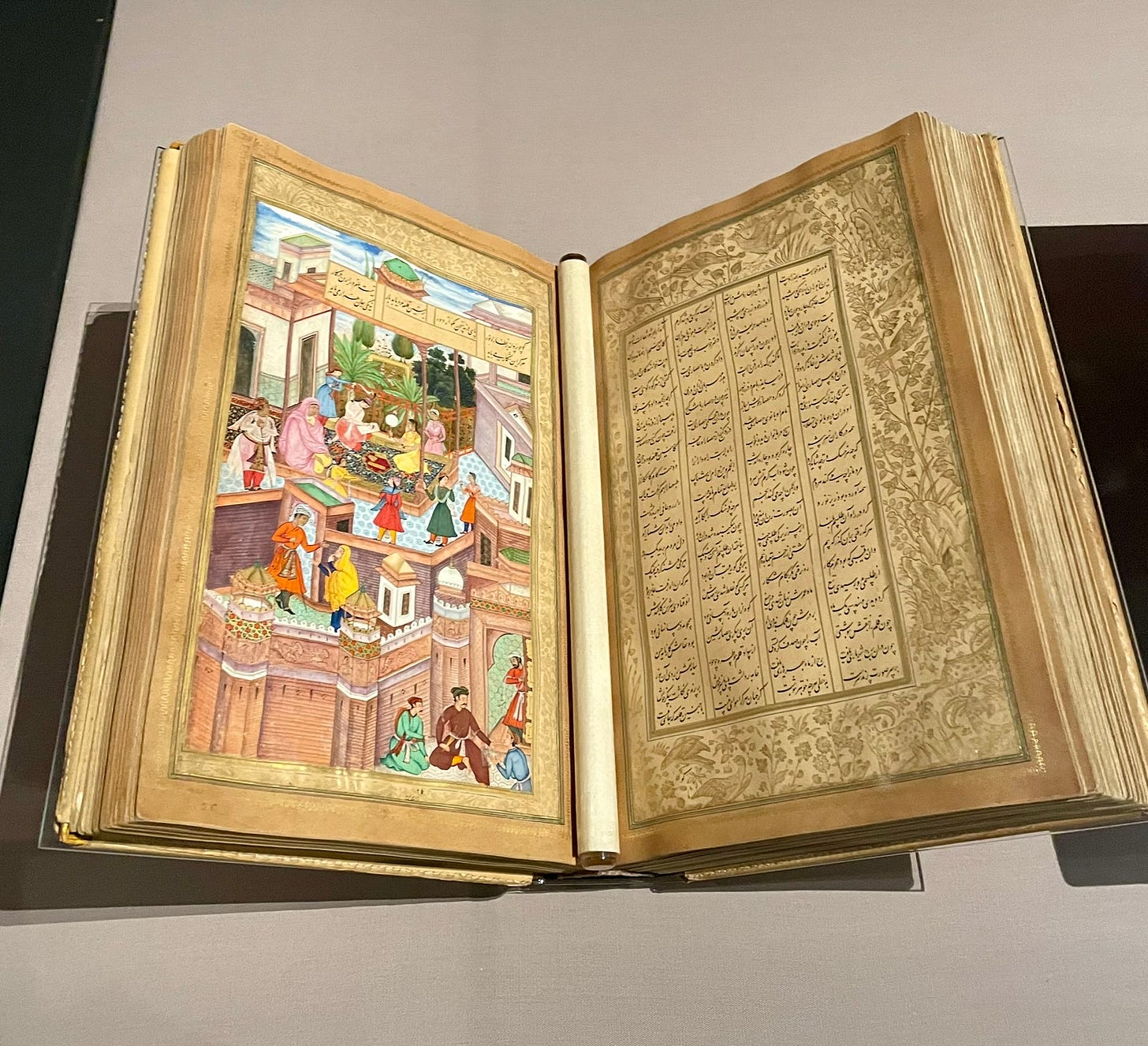
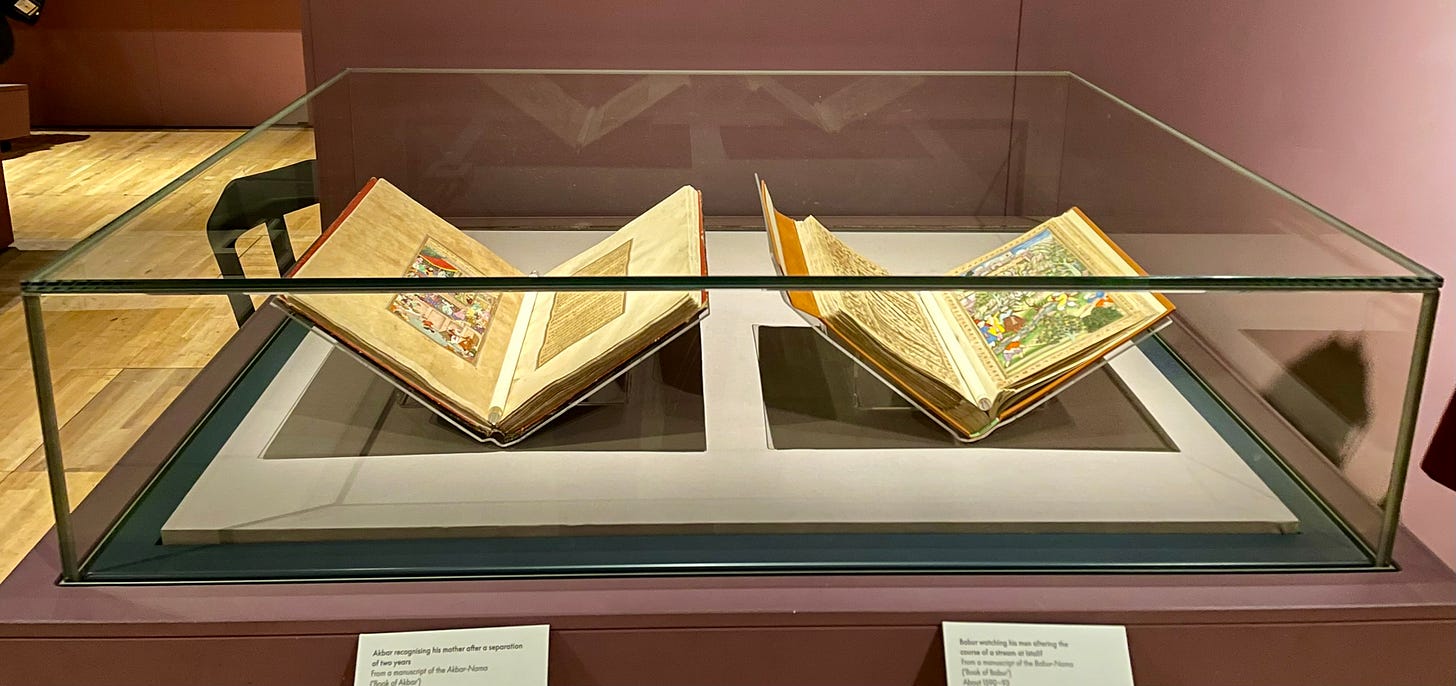
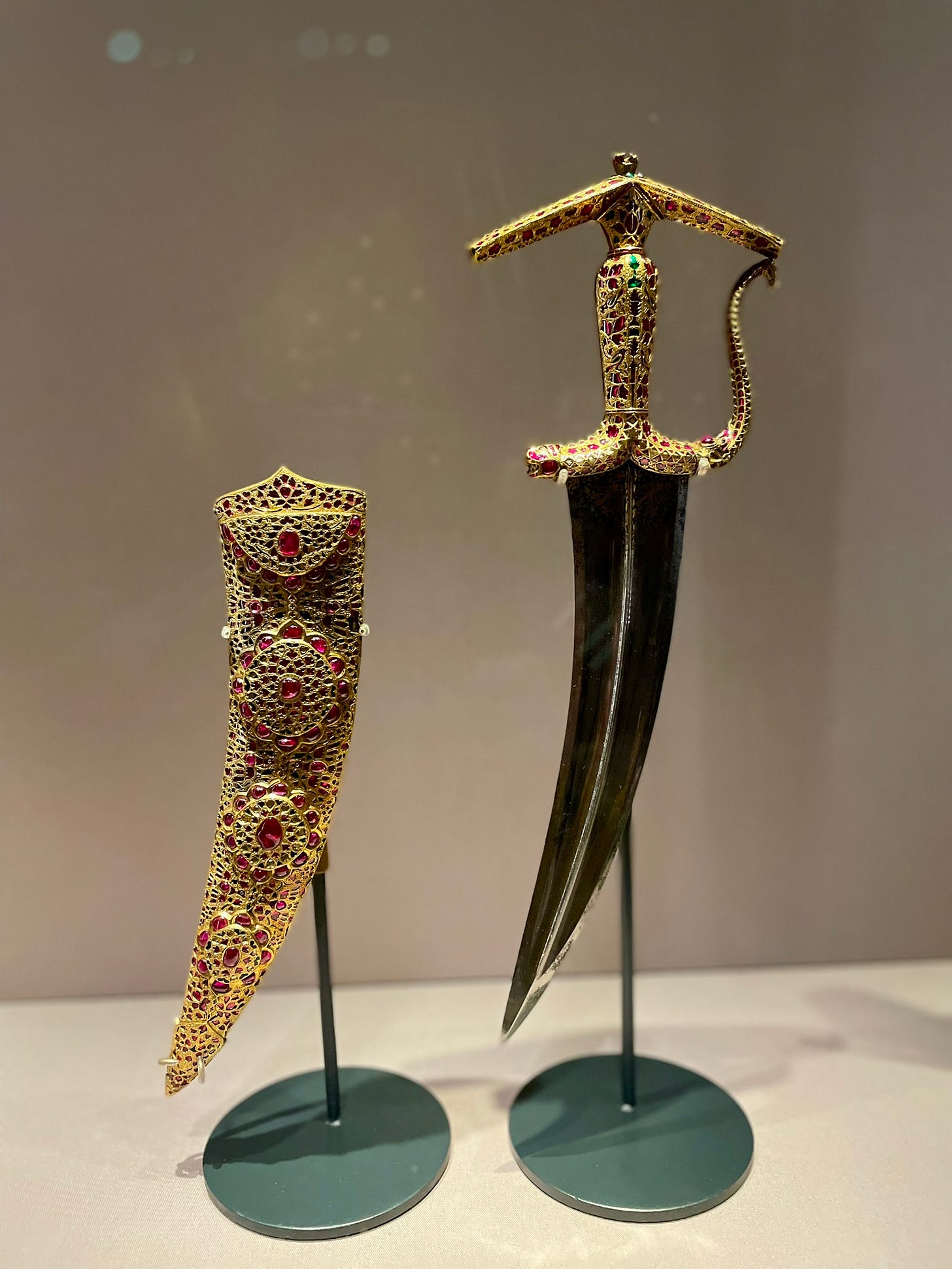
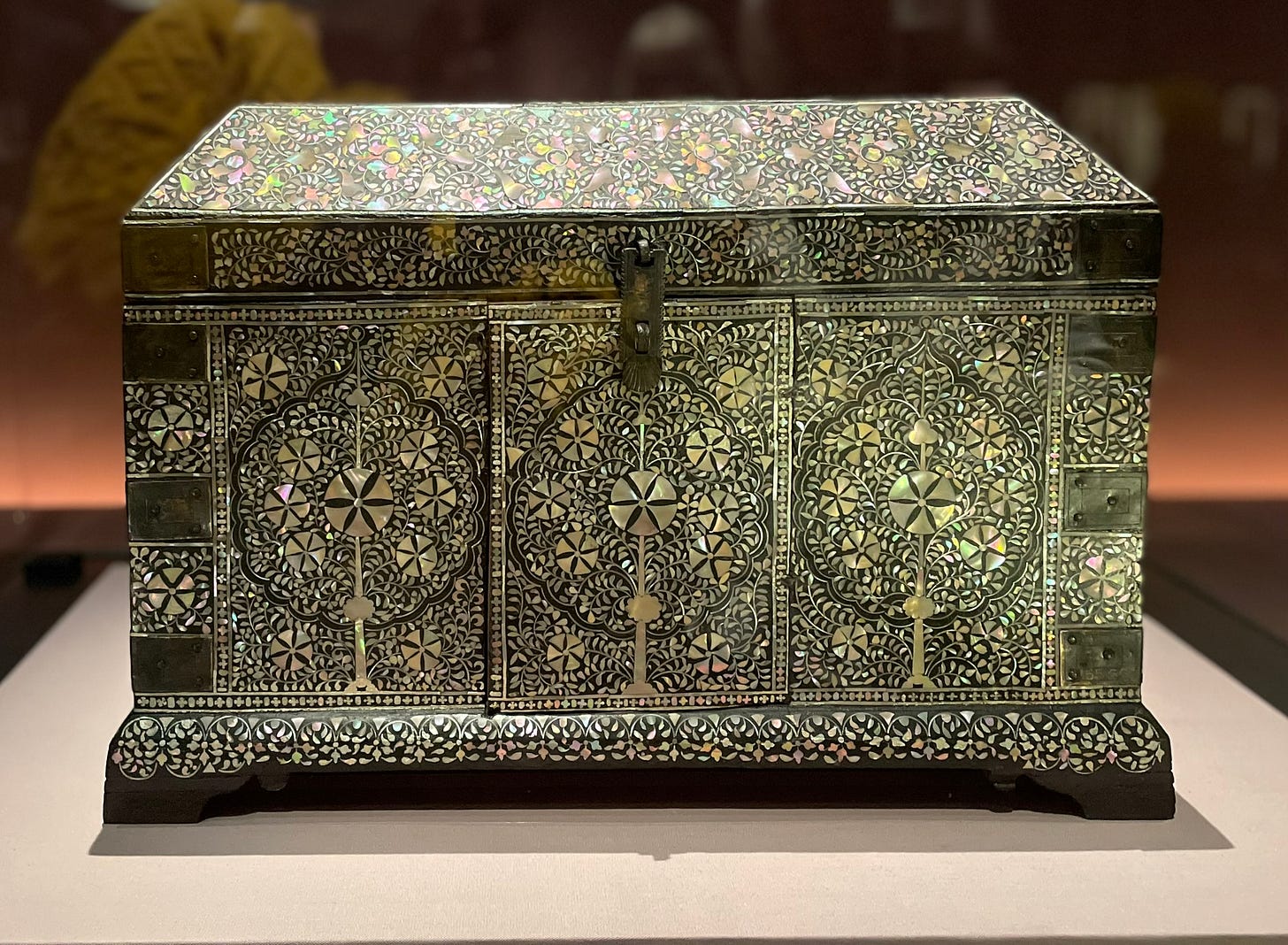
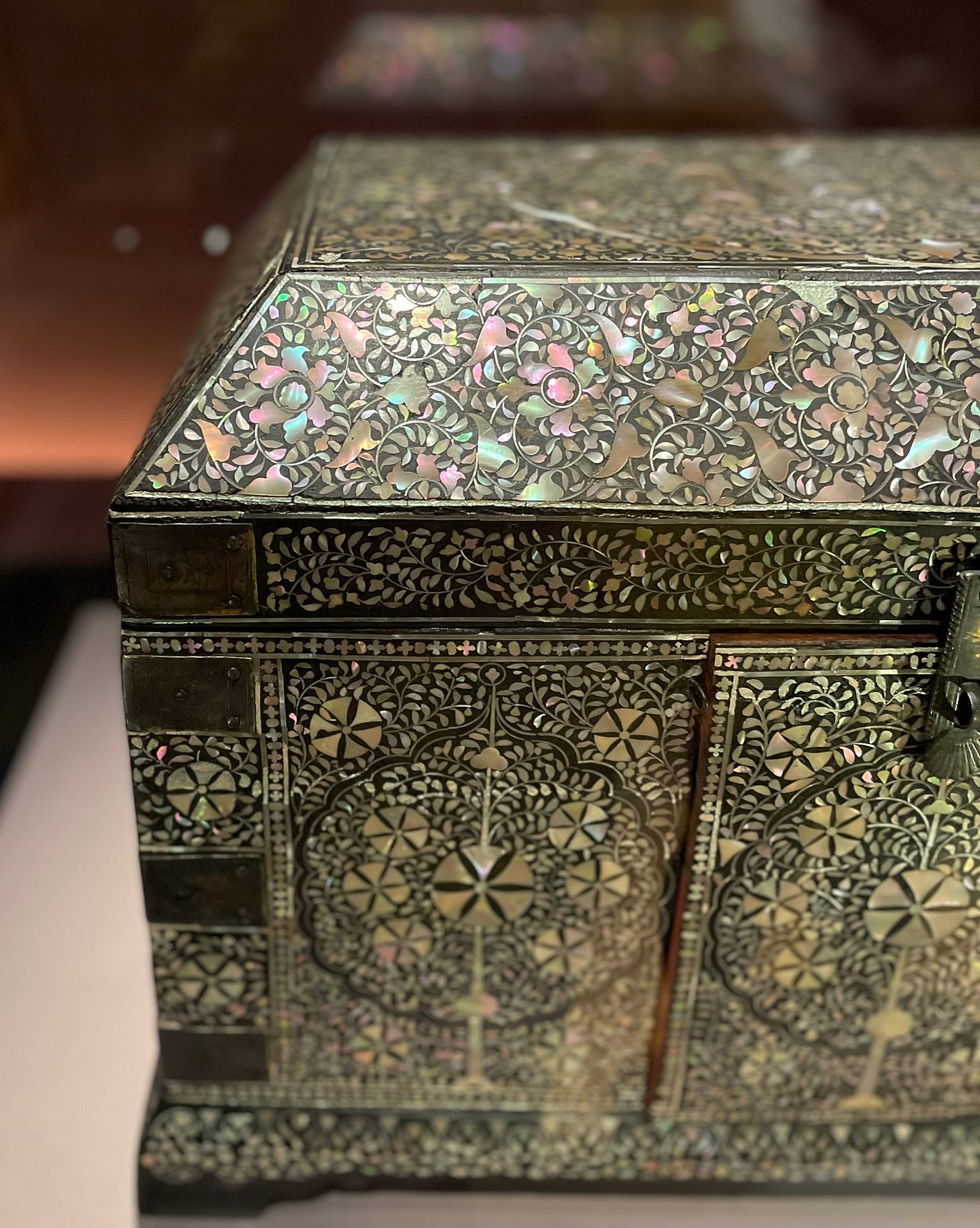
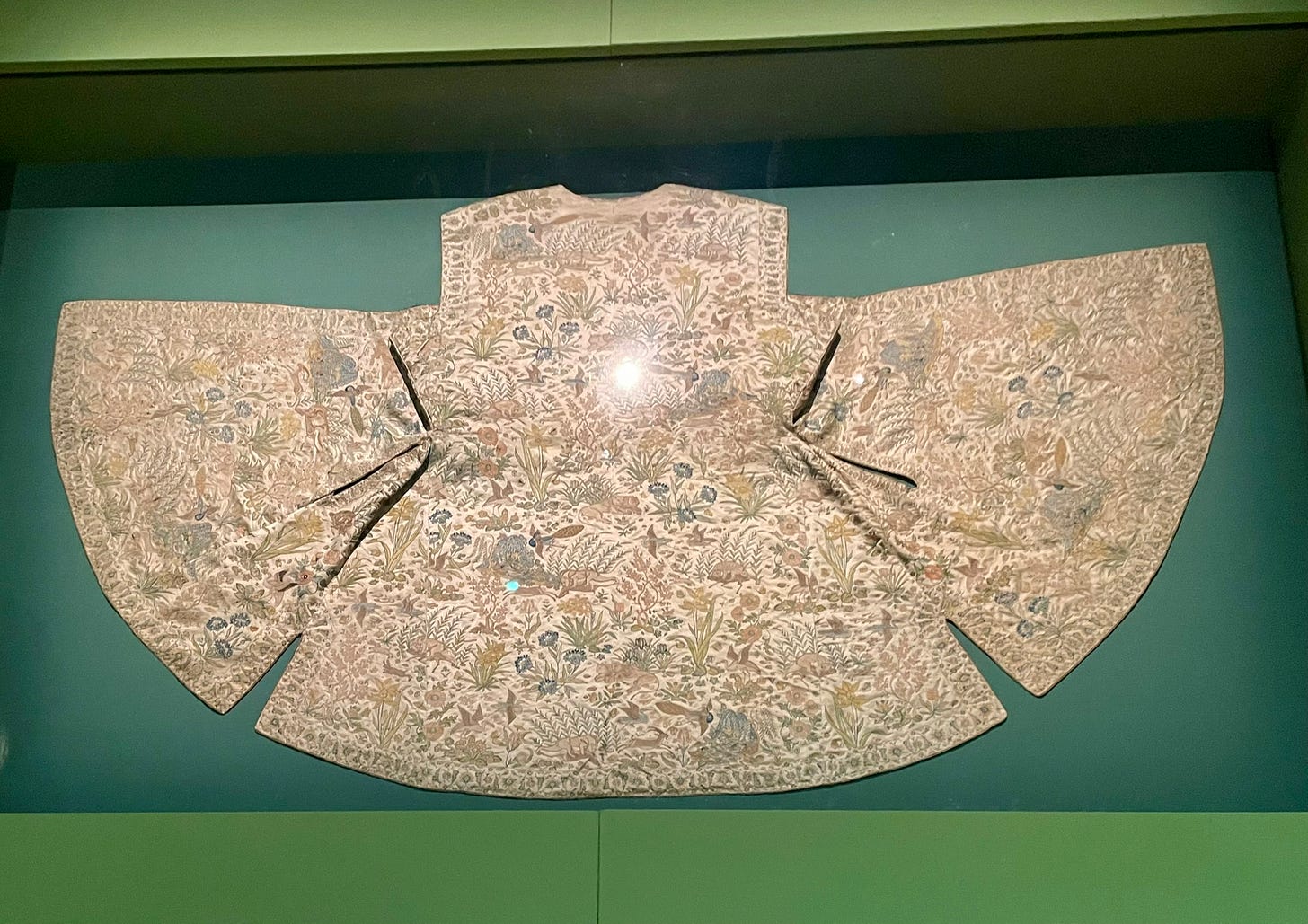
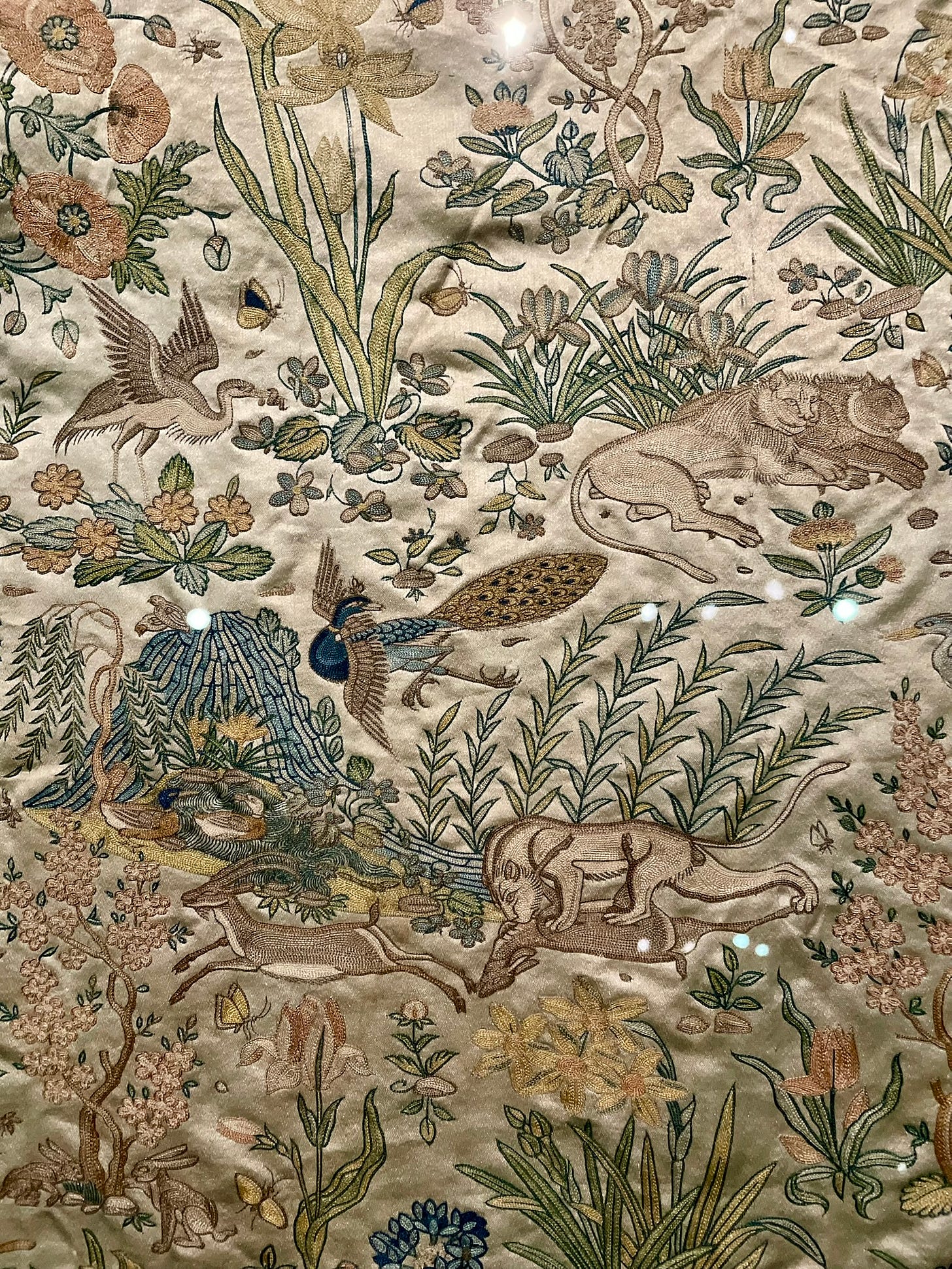
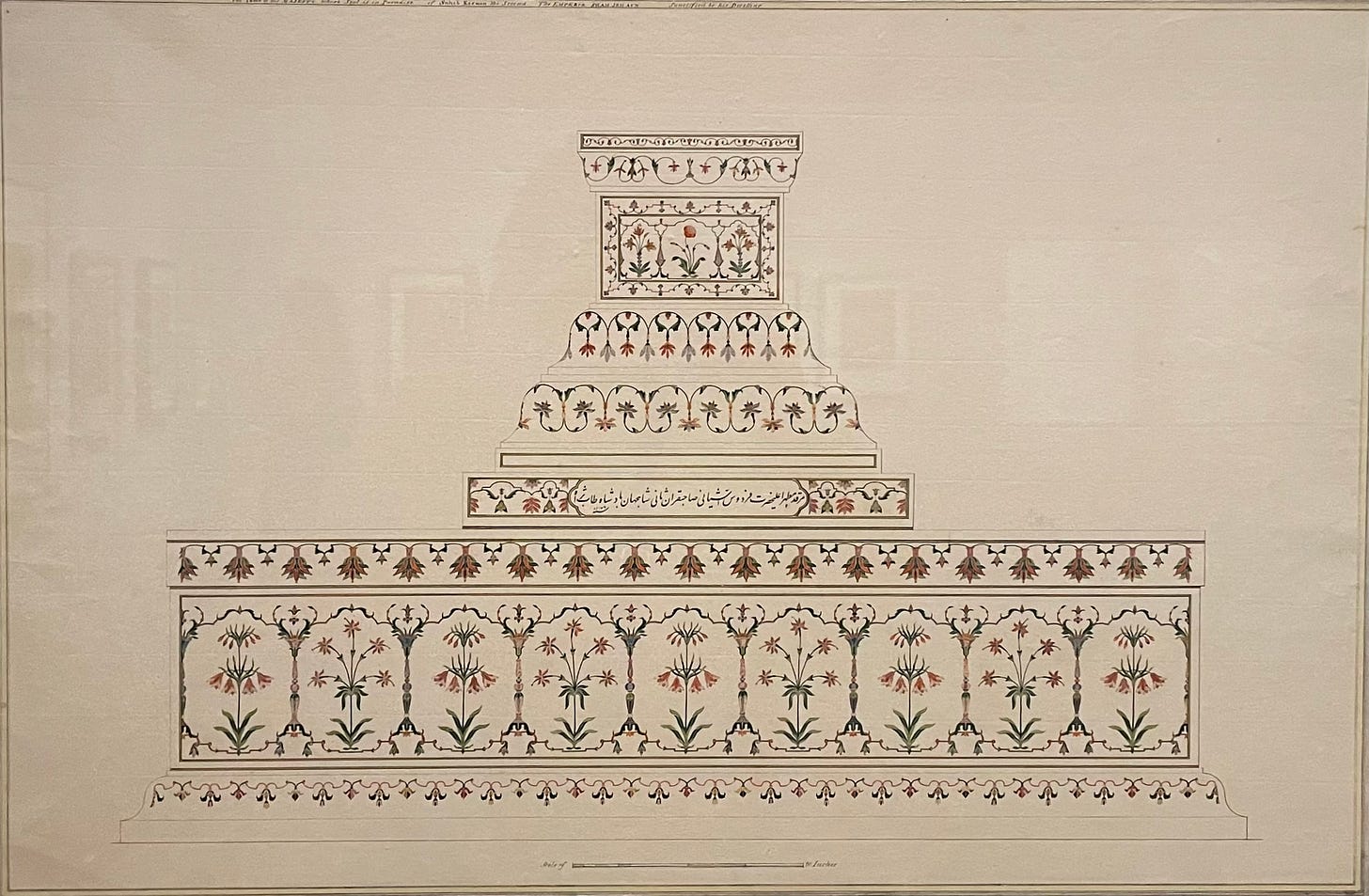
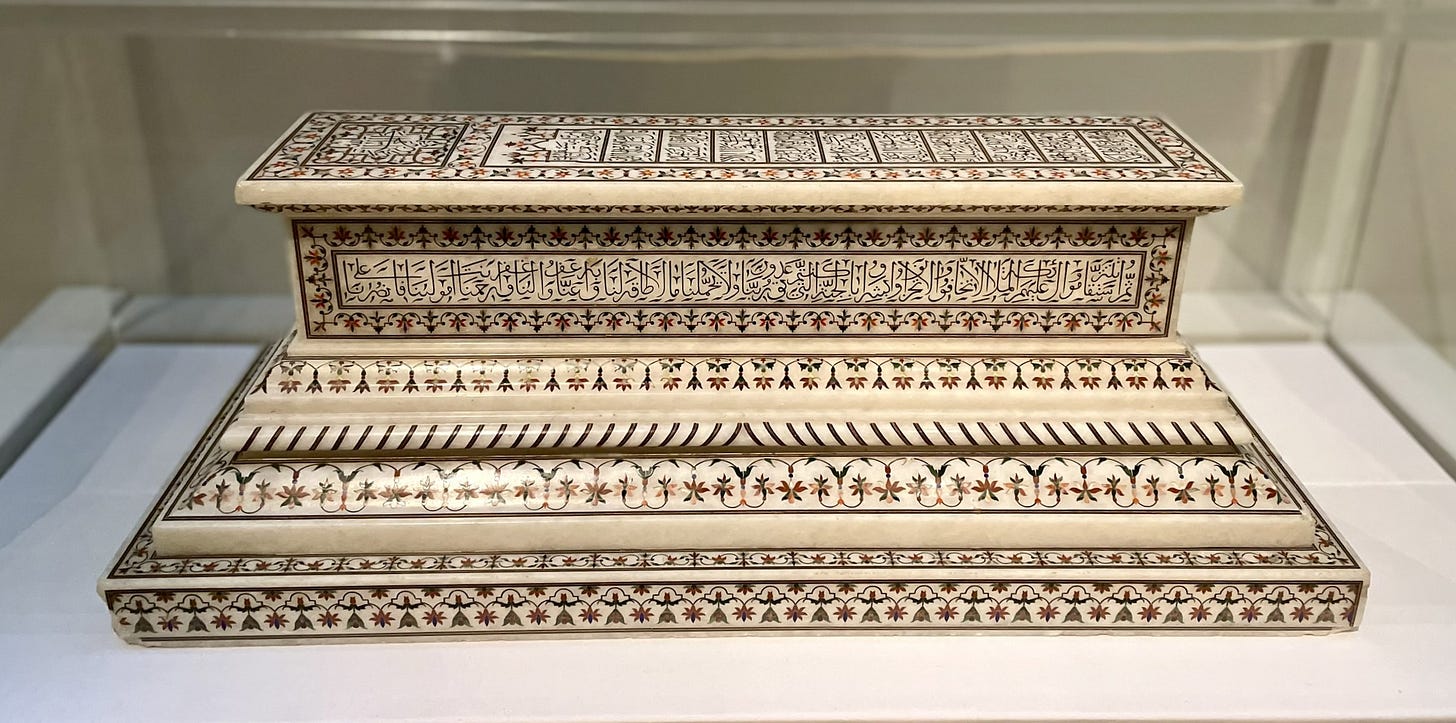
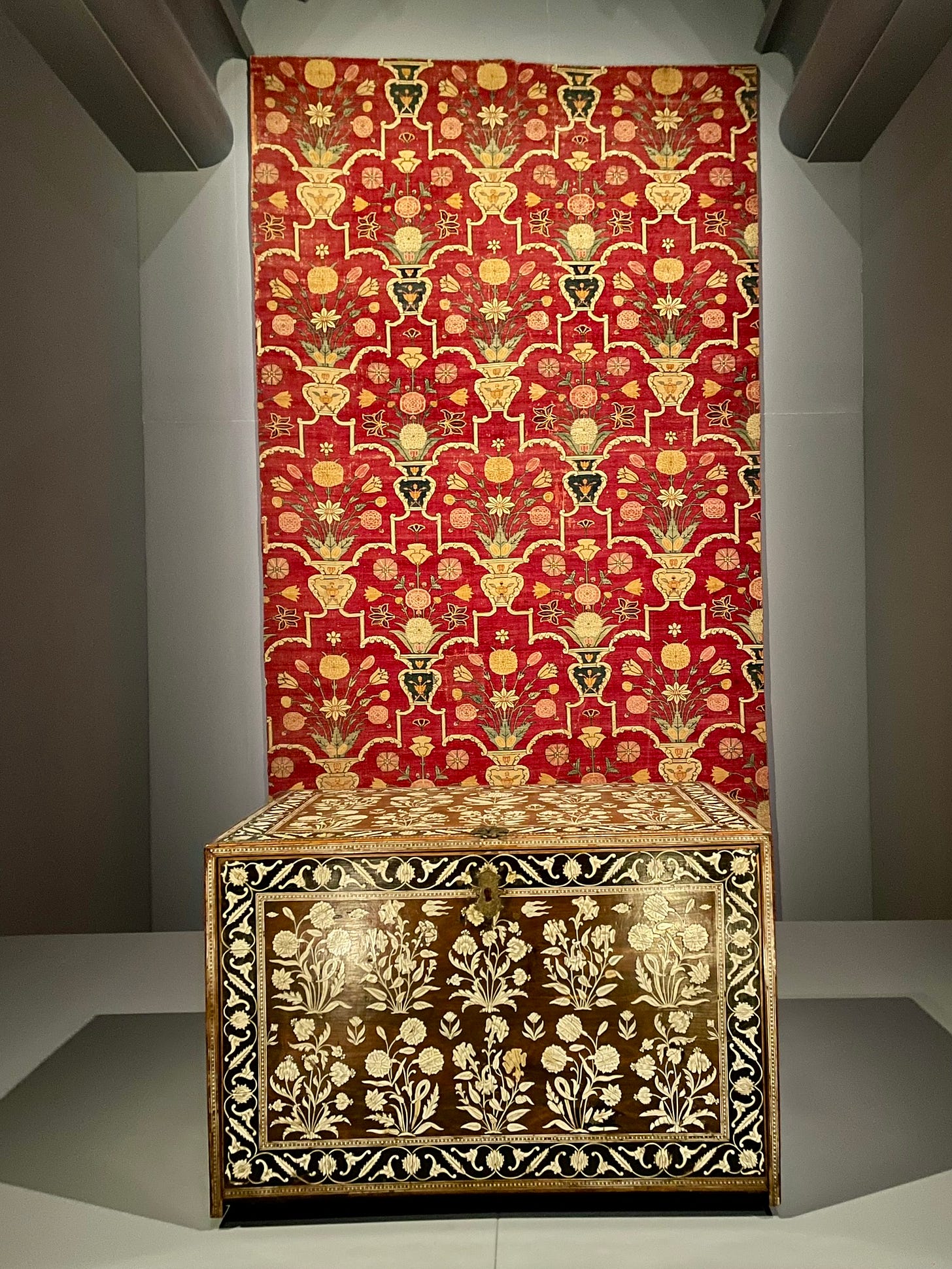
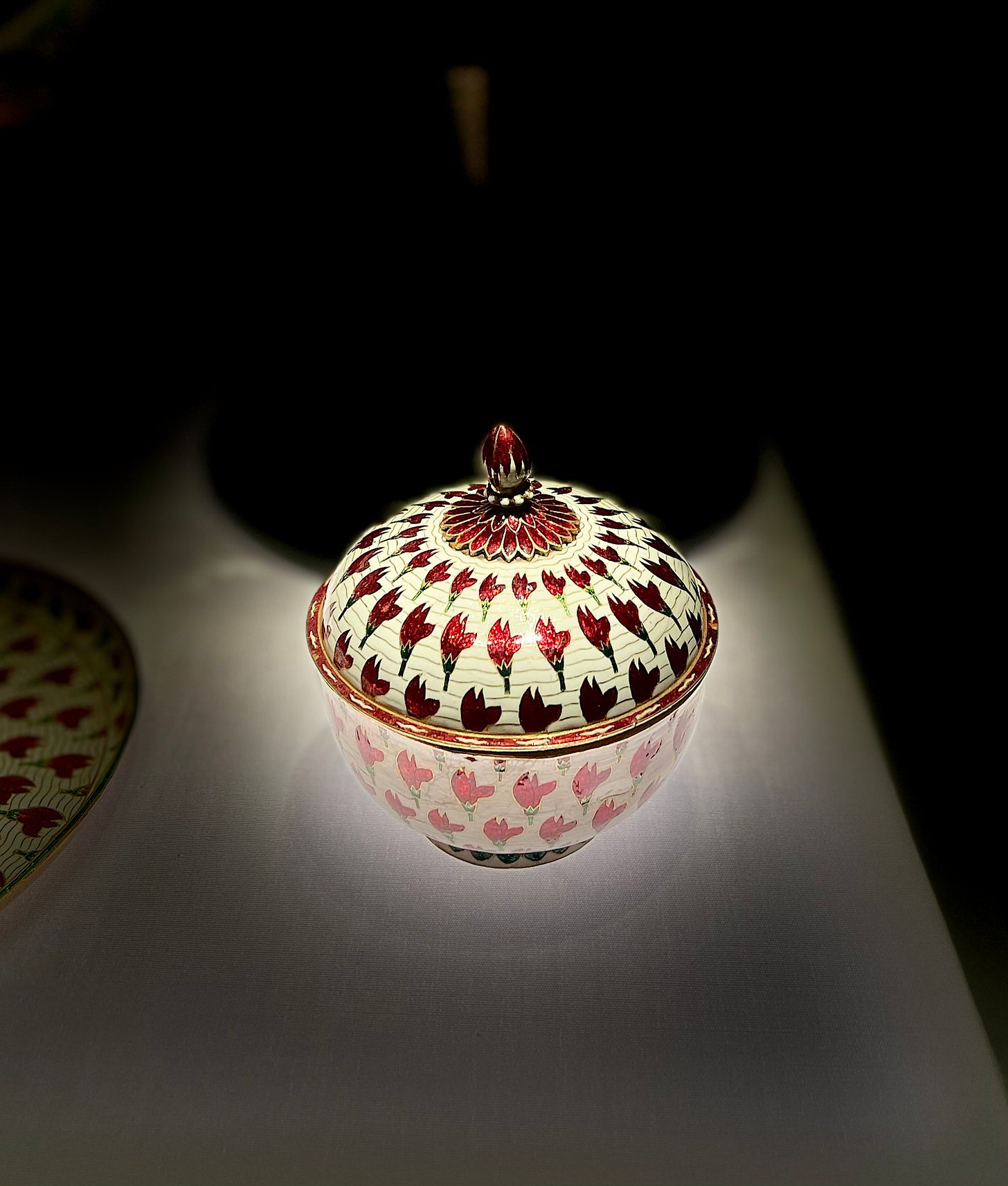
If I were in London, I would definitely see this exhibition, but I would go to the V&A anyway, just for the sake of the Museum Café!